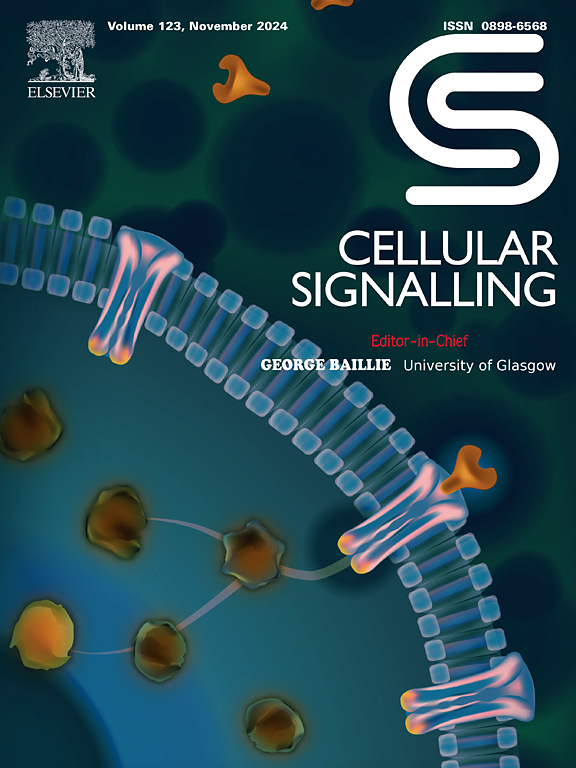肌苷单磷酸脱氢酶2嗜细胞性在小鼠和人去个体化过程中的调控和功能
IF 4.4
2区 生物学
Q2 CELL BIOLOGY
引用次数: 0
摘要
去个体化是小鼠和人类建立妊娠的必要条件。细胞应激,包括核仁应激和DNA损伤,都参与了这一过程。肌苷单磷酸脱氢酶(IMPDH)是重新合成三磷酸鸟苷(GTP)的限速酶,在特定条件下形成无膜的大分子结构,称为“嗜细胞”。然而,在去个体化过程中是否存在IMPDH嗜细胞性仍不清楚。在本研究中,我们发现在妊娠早期小鼠蜕细胞中主要检测到IMPDH2嗜细胞。妊娠第5天,着床部位的IMPDH2嗜胞量高于着床间部位。生理上,雌激素激活的子宫比黄体酮维持的延迟状态表现出更多的IMPDH2嗜细胞性。虽然GTP是小鼠体外脱个体化所必需的,但GTP水平升高会损害这一过程。此外,IMPDH2嗜细胞性可诱导小鼠核仁应激和DNA损伤。在人子宫内膜中,在月经周期中观察到IMPDH2嗜细胞增多,特别是在分泌期。它们促进人类去个体化,自然地促进细胞衰老。我们的研究结果强调了小鼠和人类早期妊娠期间IMPDH2嗜细胞性的生理相关性。本文章由计算机程序翻译,如有差异,请以英文原文为准。
Regulation and function of inosine monophosphate dehydrogenase 2 cytoophidia during mouse and human decidualization
Decidualization is essential for establishing pregnancy in both mice and humans. Cellular stresses, including nucleolar stress and DNA damage, are involved in this process. Inosine monophosphate dehydrogenase (IMPDH), the rate-limiting enzyme for de novo guanosine triphosphate (GTP) synthesis, forms membrane-free macromolecular structures called “cytoophidia” under specific conditions. However, whether IMPDH cytoophidia are present during decidualization remains unknown. In this study, we found that IMPDH2 cytoophidia are primarily detected in mouse decidual cells during early pregnancy. On day 5 of pregnancy, more IMPDH2 cytoophidia are observed at implantation sites than at inter-implantation sites. Physiologically, uteri activated by estrogen exhibit more IMPDH2 cytoophidia than those maintained in a delayed state by progesterone. Although GTP is required for in vitro decidualization in mice, elevated GTP level impairs this process. Furthermore, IMPDH2 cytoophidia can induce nucleolar stress and DNA damage in mice. In the human endometrium, IMPDH2 cytoophidia are observed during the menstrual cycle, particularly enriched in the secretory phase. They promote human decidualization and naturally enhance cellular senescence. Our findings highlight the physiological relevance of IMPDH2 cytoophidia during early pregnancy in mice and humans.
求助全文
通过发布文献求助,成功后即可免费获取论文全文。
去求助
来源期刊

Cellular signalling
生物-细胞生物学
CiteScore
8.40
自引率
0.00%
发文量
250
审稿时长
27 days
期刊介绍:
Cellular Signalling publishes original research describing fundamental and clinical findings on the mechanisms, actions and structural components of cellular signalling systems in vitro and in vivo.
Cellular Signalling aims at full length research papers defining signalling systems ranging from microorganisms to cells, tissues and higher organisms.
 求助内容:
求助内容: 应助结果提醒方式:
应助结果提醒方式:


